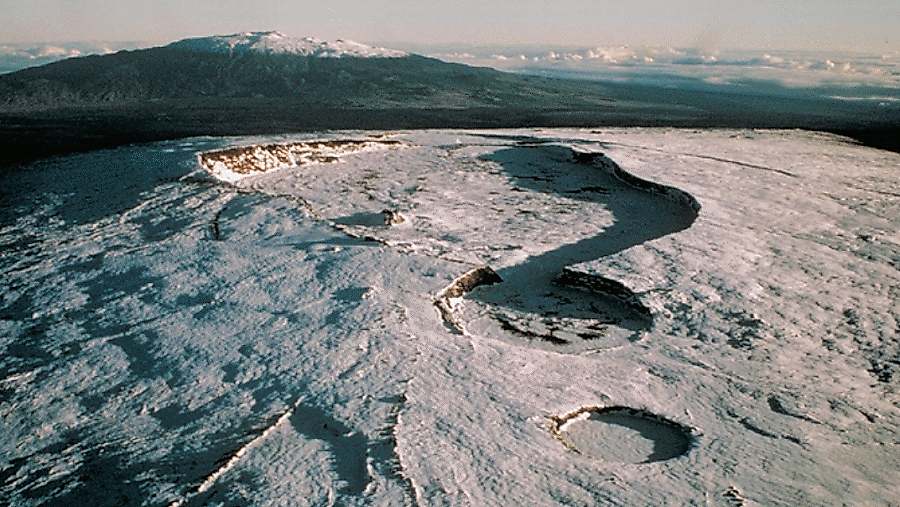The Solar System's Tallest Mountains

Galileo Galilei, an Italian mathematician, and astronomer was just one of the first scientists of the Old World who first saw mountains and craters on the moon. Since ancient times, scientists and astronomers have been keeping track of the solar system and its planets, discovering many mountains and volcanoes. Modern telescopes have brought more success in finding more mountains in our solar system today. The Hubble Telescope was launched in 1990 into low-earth orbit and is still functioning today. Launched in 2003, the Spitzer Space Telescope is in its second phase mission. The James Webb Space Telescope is still being built and will be launched in 2018.
Solar System's Giants
Astronomers and scientists have discovered taller mountains on other planets compared to earth's tallest mountains. Many mountains on other planets are immense due to the absence of plate tectonics that causes Earth's mountains to be stunted. The following list features these tallest mountains. Surprisingly, only one mountain on Earth, the Mauna Loa of Hawaii, features on this list. Mount Everest is not on this list since the measurements given are those that have measured the distance from the mountain's base to its peak. The factor of height above sea level has been discarded in this case since it is not applicable in planets of the outer space. First on the list is Olympus Mons towering at a height of 15.50 miles, found to the northwest of Tharsis Montes. It has six nested calderas inside a central caldera measuring 57 miles wide and 2 miles deep. Second on the list is Rheasilvea Monsat at 13.20 miles in height found on Asteroid Vesta. Its crater is about 8.1 miles deep and 120 miles wide. It is close enough to another crater almost covering the other crater. Third on the list is the Equatorial Ridge of Iapetus at a height of 12.40 miles found on Saturn. It is 12.42 miles wide and 808 miles long. Fourth on the list is Ascreaus Mons at a height of 11.30 miles found in the Tharsis region of Mars. It is 298.258 wide and covered with fine dust around its base. Fifth on the list is Boösaule Montes at a height of 10.90 miles found in Io, a moon of Jupiter. It is 335.54 miles wide and covers 11122.54434 square miles. Sixth on the list is Arsia Mons at a height of 9.90 miles found on Mars. Seventh is Pavonis Mons at 8.70 miles in height found on Mars. Eighth is Elysium Mons at 7.80 miles in height also found on Mars. Ninth is Maxwell Montes at a height of 6.80 miles found on Venus. The tenth is Mauna Loa at a height of 5.70 miles found on Earth (Hawaii, US).
The Alien Mountains
Only the Earth and Mars share similar magmatic processes, and both possess similar igneous rocks and minerals. Two types of volcanoes, the shield, and composite, exist on Earth. In other planets, only the shield type is most common. The main difference is size and height. On earth, tectonic plates rule a mountain's upwelling and influence its height. In most other planetary bodies in our solar system, there are no tectonic plates which hinder the upwelling of mountains to great heights 10 to 100 times found on earth. Massive heights and massive acreage describe mountains on other planets. Cryovolcanoes is another weird phenomenon in Saturn's moon, Enceladus, and Titan, where volcanoes erupt towering blasts of water through solid ice. Venus has the most volcano mountains in the solar system.
The Solar System's Tallest Mountains
| Rank | Mountain | Location | Height in miles (from base to peak) |
|---|---|---|---|
| 1 | Olympus Mons | Mars | 15.50 |
| 2 | Rheasilvea Mons | Asteroid Vesta | 13.20 |
| 3 | Equatorial Ridge of Iapetus | Saturn | 12.40 |
| 4 | Ascreaus Mons | Mars | 11.30 |
| 5 | Boösaule Montes | Io, a moon of Jupiter | 10.90 |
| 6 | Arsia Mons | Mars | 9.90 |
| 7 | Pavonis Mons | Mars | 8.70 |
| 8 | Elysium Mons | Mars | 7.80 |
| 9 | Maxwell Montes | Venus | 6.80 |
| 10 | Mauna Loa | Earth (Hawaii, US) | 5.70 |











